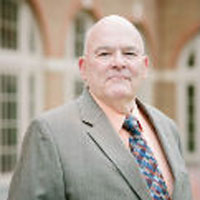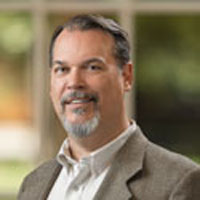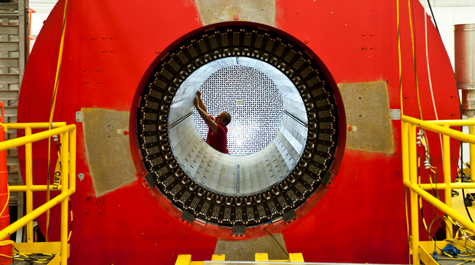W&M professors analyze Jefferson Lab economic, intellectual impact
Just how much the presence of the Department of Energy’s Thomas Jefferson National Accelerator Facility influences Hampton Roads, Virginia and the world is evident in two William & Mary professors’ recent economic impact study on the facility.
The Jefferson Lab not only generates revenue but immeasurable amounts of intellectual capital, according to the study done by Roy Pearson, chancellor professor of business emeritus in economics and finance, and K. Scott Swan, professor and area head of marketing, at W&M’s Raymond A. Mason School of Business. The facility houses the lab’s unique particle accelerator, known as the Continuous Electron Beam Accelerator Facility, which is used by scientists from all over the world.
In March Jefferson Lab officials released a synopsis of the findings of the study, which was commissioned by Southeastern Universities Research Association. Among the highlights:
Fiscal year 2018 spending produced $269.1 million of total economic output locally, including approximately $149.2 million generated in labor income paid out to 2,015 local full-time and part-time employees. Three-quarters of Jefferson Lab’s direct spending is in Hampton Roads. When including the Commonwealth of Virginia, Jefferson Lab’s economic output increased to $308.7 million, producing $168.3 million labor income for 2,240 job-holders.
The study attributes Jefferson Lab’s economic benefits to three major sources, according to officials there. The first is the direct spending by the laboratory, its contractors, the scientists who conduct their research at the lab and its visitors. There are also the intellectual benefits to local universities, schools and communities that are derived from the laboratory’s research and outreach programs. Finally, there are the benefits that come from the commercialization of technologies developed at the laboratory for its science mission.
 “The data part is similar to other studies, but this is a very special kind of enterprise — a service lab,” Pearson said. “And so they’re not using everyday equipment. It’s not everyday services and experiments that are going on. So you have to look behind the data really to get a real feel for just how important is this and what does it mean.”
“The data part is similar to other studies, but this is a very special kind of enterprise — a service lab,” Pearson said. “And so they’re not using everyday equipment. It’s not everyday services and experiments that are going on. So you have to look behind the data really to get a real feel for just how important is this and what does it mean.”
William & Mary has a long and deep involvement in JLab experiments, particularly with the university’s Department of Physics.
“The nuclear physics program at W&M owes much to interaction with Jefferson Lab,” the report states, adding that the university has granted 63 Ph.D.s to date based on both experimental and theory work at JLab.
“Currently, there are 14 students in W&M’s program working towards a JLab-based Ph.D.,” the report states. Jefferson Lab’s user roster for 2018 lists a total of 68 William & Mary users, including faculty, graduate students and undergraduates.
Swan and Pearson emphasized that JLab works closely with local and in-state colleges and universities, and particularly has fostered its relationship with historically black colleges and universities.
“People come in internationally to attend W&M, Hampton University, Old Dominion and the others,” Swan said. “And there’s some really quality people that come and are in our area because of the universities and because of that openness with working with the Jefferson Labs that they get, being proximate and that it creates for all of us a better condition.”
 They were also struck by the central role that the lab’s physical work played in bringing science minds from all over the globe to work on various projects. Providing as a nonprofit service enterprise the lab facility where experiments and tests can be provided makes JLab ultra-local.
They were also struck by the central role that the lab’s physical work played in bringing science minds from all over the globe to work on various projects. Providing as a nonprofit service enterprise the lab facility where experiments and tests can be provided makes JLab ultra-local.
“So when we talk about the activity that’s going on, it’s here,” Pearson said. “And that’s very important to Newport News and Virginia. It’s not something that we’re manufacturing with parts from China or Europe or somewhere else in the country and then selling it outside of here with very little activity taking place here. The activity is here; it’s in Newport News. You don’t see it because all four of those halls are under domes; they’re underground.”
Pearson, who did a study on CEBAF in 1990 when he worked with W&M’s Bureau of Business Research, has followed JLab’s steady growth for decades.
“Every politician and government agency is interested in jobs,” Pearson said. “And it used to be just jobs. But now there’s much more emphasis on we want it to be high-paying jobs. And these are high-paying jobs.
“The direct employment and the scientists who come to do the experiments — we’re talking about over $100,000 of labor income average. And so these are the kinds of jobs you’d like to have.”
The next area of potential progress is JLab’s pursuit of the electron ion collider, which will either be awarded there or at Brookhaven National Lab in Upton, New York. That acquisition would bring an unprecedented amount of scientific research and revenue to the region, Pearson said.
The professors noted the JLab scientists’ willingness to share their knowledge and expertise with the larger world, and their emphasis on their role as educators in the community.
“They wanted to show we have a dollar and jobs impact,” Pearson said. “But to us, their impact is so much more than that.”
Joseph McClain contributed to this report.
















